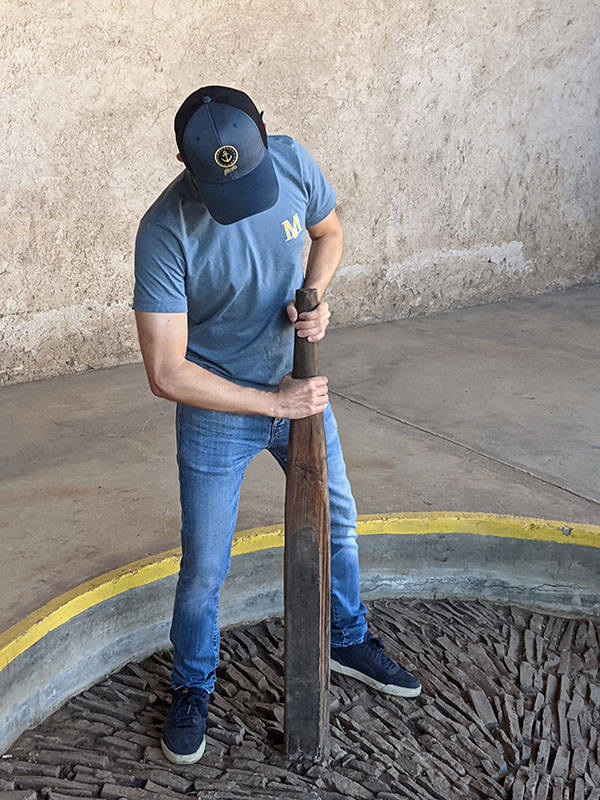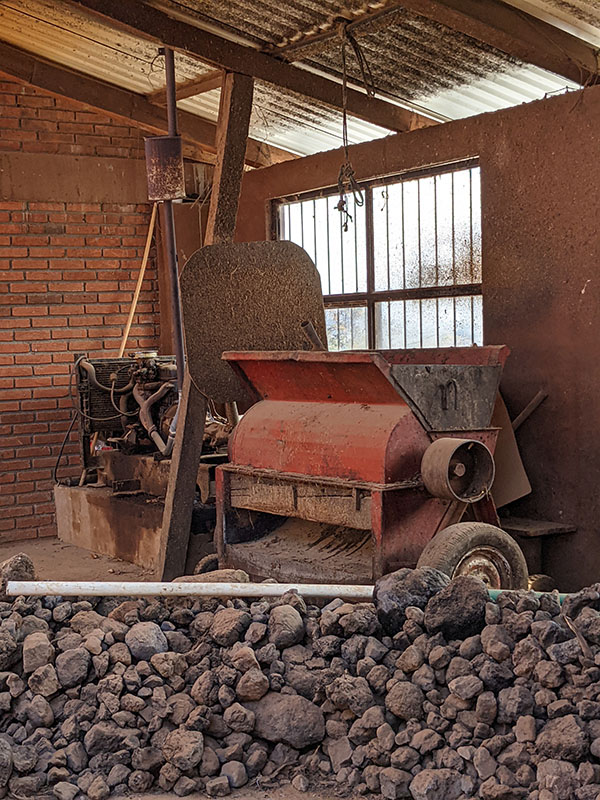How Canada's Favourite Mezcal Is Made
Agave 101
HARVEST
Agaves can either be cultivated or sourced in the wild. Some agave species, such as espadín, are easier to domesticate than others. All agaves used to make mezcal should be harvested at the height of their maturity, when the flowering stalk known as the quiote begins to sprout. For some species this will be at 7 years and for others up to 30! The leaves (pencas) are shaved off and the heart of the plant known as the piña (for its resemblance of a pineapple) is transported to the distillery.
COOKING
Cooking the agaves varies depending on the community; however, it is most common to use a prehispanic, underground oven. A fire is built at the bottom of the pit and stones (typically volcanic) are placed on top. Once red hot, a layer of wet agave fiber (bagazo) is usually put on top before placing the piñas, so as not to char them. Next, a form of mat is generally used to cover the piñas before covering the entire mount in dirt. The oven is sealed with the earth, essentially snuffing out the fire and allowing the heat of the oven to cook the piñas, normally 3-5 days depending on the community. Here, many of the delicious nutty, smoky, and dried fruit notes you find in your mezcal are created.
MILLING
Traditionally, the cooked piñas were mashed by hand using giant wooden mallets in a cement or stone hole. Later, other methods were introduced such as the tahona, a giant stone wheel that’s pulled by mule/horse in circles to crush the cooked agave. Today, it’s most common to use a type of gas or electric-powered shredder. As it’s been discovered that the milling does not contribute much if at all to the flavours and aromas of the final product, this is becoming the most commonplace.



FERMENTATION
Fermentation is where the majority of the chemical compounds responsible for aromas and flavours in mezcal are created. Fermentation usually takes place in open wooden vats, although stainless steel is becoming more common as well. The fermentation is always open air and accelerators and other yeasts are not added to artisanal mezcal. The fermentation is spontaneous using nothing but the airborne yeasts of the surrounding environment to convert the sugars into alcohol and other compounds. Depending on the climate and time of year, fermentation can be as quick as a few days or as long as a month.
DISTILLATION
In most larger tequila production today, column stills are used to expedite the process. With mezcal, a more traditional method is followed using pot stills. These may be copper alembic stills of Arabic origin or simpler clay pot stills of Filipino origin. With these pot stills, two discontinuous distillations are carried out. The first is to distill the fermented juice and fibers to get the ordinary (ordinario) and the second is to distill the ordinario to create mezcal. In the second distillation, the maestro mezcalero makes cuts to separate the heads, the heart and the tails (puntas, cuerpo y cola) of the distillation.
ALCHOHOLIC ADJUSTMENT
Each mezcal-making community will have its own particular tastes and this will be reflected in the alcoholic adjustment. This will include the strength of the mezcal (ABV). Traditionally, mezcal is drunk between 45% and 55% (90-110 proof). This was always checked using artisanal methods, such observing the bubbles that are formed by sucking mezcal into a hollowed-out reed and letting it fall into a hollow gourd. Based on the size, duration and retention of the bubbles, the maestro could determine its strength. Today, it is also checked using scientific instruments. Since mainly the heart of the distillation (40-60% ABV) is used for the final product, it is diluted with the weaker tails (colas) or water to bring the overall strength down to the desired level.
